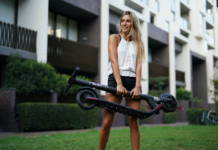[ad_1]
Is your e-bike on the fritz? It may need significant repairs, or it might just need a bit of DIY e-bike maintenance. We’ve created this electric bike troubleshooting guide to help you get back in the seat and back on the road. If your e-bike won’t start, try the following techniques.
Check the Battery
It may be time for some e-bike battery maintenance. Failure to start is the most common problem related to e-bikes, but the issue is usually as simple as a dead battery. If your motor isn’t functioning as it should, ensure that your battery has a charge. If you haven’t charged it in a while, let the battery sit in its charger for about eight hours, and then try again.
If the battery still shows no charge, it may be defective, or it may have run its course. The charger may also be defective. See if the LEDs in your charger light up when the battery is docked. If you have a voltmeter or multimeter, test the voltage in your battery. If your battery is 24 volts but the voltmeter reads half that number, the battery is faulty. You can purchase replacement e-bike batteries and conversion kit batteries inexpensively.
If you can confirm that the battery is fully charged but the motor still won’t start, keep reading for more tips in our electric bike troubleshooting guide.
Check the Wiring and Connections
When the issue isn’t related to e-bike battery maintenance, check your connections. A loose connection may inhibit the signals between the battery, the controller, and the motor. This is an especially common issue with custom bike kits, as many of the components are individually manufactured and then connected by the user. Refer to your manual, look for any loose wiring, and reconnect if necessary.
Pay particular attention to your brake levers. If your handlebars have taken some damage due to a drop, they may be pulling on the brake levers and keeping your motor inhibitor switch in a permanent “on” position. You’ll need to repair your brake levers, if that’s the case.
Check the On/Off Switch
The on/off controller is responsible for activating the other electric bike parts and components. If your e-bike has a controller, it may be faulty. First, turn it to the “on” position. If you get no response, or if it only works intermittently, it may need replacement. A controller may fail for numerous reasons, including damage to the internal power supply, weather damage, or poor contact with the wiring.
Open the panel. Look for signs of physical damage, weather decay, and loose wiring. Also, try turning it on, and see if it runs hot or cold. If it’s visibly damaged, or if you’re unable to repair it by tightening up loose wires, consider replacing.
Other E-Bike Maintenance Tips
If you keep your e-bike outdoors in hot temperatures, try bringing it inside and letting it cool for a few hours. If your throttle feels loose, it may be damaged. If all else fails, you may also seek the expert opinion of a knowledgeable bike mechanic.
If you haven’t found the answers you need in this electric bike troubleshooting guide, it may be time to replace the motor. We recommend investing in an e-bike conversion kit, which allows you to instantly turn any bike into an electric bike. These kits are easy to maintain, and they’re warranty-protected. Get the parts you need, and ride safely.
The post The Definitive Electric Bike Troubleshooting Guide appeared first on Leeds Bikes.
[ad_2]
Source link













